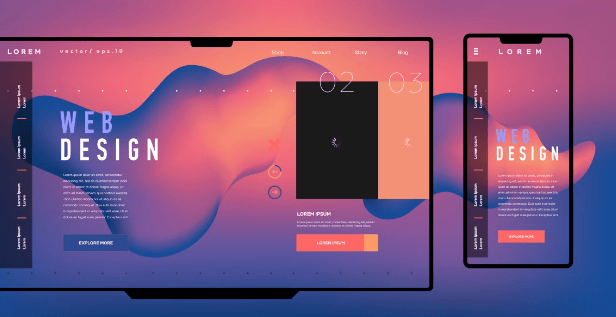Building Scalable And Future-Proof Websites: Strategies For Growth

Building a website that can adapt and grow with your business is crucial for long-term success in the ever-changing internet landscape. A scalable and future-proof website can accommodate increasing traffic, evolving technologies, and changing user expectations without requiring constant redesigns or overhauls. In this article, we’ll explore the importance of Scalability and future-proofing in web development and discuss strategies to build websites that can thrive amidst rapid growth and technological advancements.
Understanding Scalability And Future-Proofing
Scalability refers to a website’s ability to handle growing amounts of traffic, data, and user interactions without sacrificing performance or reliability. A scalable website can seamlessly accommodate spikes in traffic during peak periods, such as product launches or promotional campaigns, without crashing or slowing down. Future-proofing, on the other hand, involves anticipating and preparing for future changes in technology, user behavior, and business requirements. A future-proof website is designed to adapt and evolve, ensuring longevity and relevance in a fast-paced digital environment.
See also: Snipping Tool for Windows
The Importance Of Scalability And Future-Proofing
Accommodating Growth:
As your business grows, so does the demand on your website. A scalable website allows you to quickly scale your infrastructure and resources to handle increasing traffic, transactions, and data volumes. Whether you’re attracting new customers, launching new products, or expanding into new markets, a scalable website ensures that your online presence can support your business growth without performance bottlenecks or downtime.
Enhancing User Experience:
User experience is paramount in today’s digital landscape. A scalable and future-proof website provides a seamless and responsive experience across devices and platforms, regardless of the volume of traffic or the complexity of interactions. By prioritizing performance, usability, and accessibility, you can ensure that every visitor has a positive experience, driving engagement, satisfaction, and loyalty.
Adapting To Technological Advances:
Technology is constantly evolving, and innovations can quickly render existing websites obsolete. A future-proof website embraces emerging technologies and standards, such as mobile responsiveness, progressive web apps, and voice interfaces, to stay ahead of the curve. By leveraging modular architectures, open standards, and flexible frameworks, you can future-proof your website against obsolescence and position it for long-term relevance and competitiveness.
Supporting Business Agility:
In today’s digital economy, agility is essential for staying competitive. Built to scale and ready for the future, your website will allow you to quickly adjust to changing market conditions, evolving consumer needs, and fierce competition. Whether you’re launching new features, integrating with third-party services, or adapting to regulatory changes, a flexible and extensible website architecture empowers you to innovate and iterate at speed, driving business agility and resilience.
Strategies For Building Scalable And Future-Proof Websites
Adopt a Modular Architecture:
Develop, launch, and scale your website’s components separately by breaking them down into smaller, more manageable pieces. By decoupling front-end and back-end functionality, you can achieve greater flexibility, Scalability, and maintainability. Embrace microservices, APIs, and serverless architectures to build a scalable foundation that can evolve and expand with your business needs.
Leverage Cloud Infrastructure:
Embrace cloud computing platforms, such as Amazon Web Services (AWS), Microsoft Azure, or Google Cloud Platform, to leverage on-demand Scalability, reliability, and performance. Cloud-based hosting services offer elastic resources, auto-scaling capabilities, and global distribution, enabling you to handle spikes in traffic and deliver consistent performance across geographic regions.
Optimize Performance And Load Times:
To enhance user experience and decrease load times, prioritize performance optimization strategies including caching, image compression, and code magnification. Employ content delivery networks (CDNs) to distribute content closer to end-users, reducing latency and improving responsiveness. Monitor and analyze website performance metrics regularly to identify bottlenecks and areas for optimization.
Design With Mobile In Mind:
It is essential to make sure your site is responsive for mobile devices since mobile devices now make up a large percentage of website traffic. Adopt a mobile-first approach to web design, focusing on simplicity, speed, and usability across devices of all sizes. Incorporate media queries, fluid grids, and flexible pictures into your responsive design to make sure it works flawlessly on PCs, tablets, and smartphones.
Embrace Progressive Enhancement:
Adopt the tenets of progressive enhancement to ensure that users of all browsers and devices get the same great experience. Start with a core experience that works well on all devices, then layer on enhancements for more capable devices and browsers. Make sure your website works for every user, no matter what device or browser they’re using, by making accessibility, usability, and performance your top priorities.
Future-Proof With Flexible Frameworks:
Choose web development frameworks and technologies that are adaptable, extensible, and future-proof. Embrace open-source technologies, such as React.js, Vue.js, or Angular, that have active communities and support for emerging standards. Avoid proprietary or niche technologies that may become obsolete or unsupported in the future, and prioritize solutions that offer long-term stability and compatibility.
Invest In Security And Compliance:
With the ever-increasing sophistication and scope of cyber-attacks, website security has become an absolute must. To prevent data breaches and harmful attacks, set up strong security measures like firewall protection, HTTPS encryption, and frequent security audits. Protect user privacy and reduce legal risks by making sure you’re in line with industry standards and regulations like PCI DSS, CCPA, or GDPR.
Plan For Scalability From The Start:
Scalability should be a core consideration from the outset of your website development project. Design your architecture, infrastructure, and database schema with Scalability in mind, anticipating future growth and demand. Implement horizontal scaling techniques, such as load balancing, auto-scaling groups, and sharing, to distribute traffic and resources across multiple servers or instances.
Test And Iterate Continuously:
Continuous testing and iteration are essential for maintaining your website’s Scalability and reliability. Implement automated testing frameworks, such as unit tests, integration tests, and end-to-end tests, to validate functionality, performance, and security. Use Scrum or Kanban, two examples of agile development approaches, to quickly iterate and react to stakeholder and user feedback.
Monitor And Optimize Performance:
Monitor key performance metrics, such as response times, error rates, and resource utilization, to identify performance bottlenecks and areas for improvement. To proactively identify problems and react quickly, set up strong monitoring and alerting systems like server monitoring solutions or application performance monitoring (APM) tools. Optimize resource allocation, database queries, and code execution to improve efficiency and Scalability.
Conclusion
Building a scalable and future-proof website requires careful planning, foresight, and investment in the right technologies and strategies. When you build a website with scalability, performance, security, and flexibility as your top priorities, it will be able to handle expansion, change, and the ever-changing digital world. Whether you’re launching a new start-up, expanding an existing business, or embarking on a digital transformation journey, Scalability and future-proofing should be integral to your web development strategy. The company offers comprehensive website design and development services tailored to meet the specific needs and budget constraints of small businesses. A website that is built to last and provide long-term success for your company can be achieved by following best practices, utilizing state-of-the-art technologies, and placing a premium on user experience.




